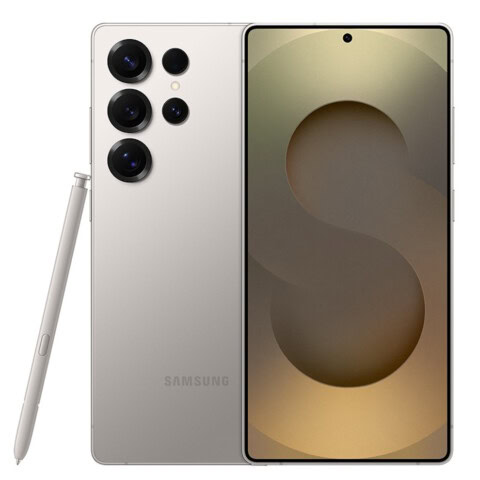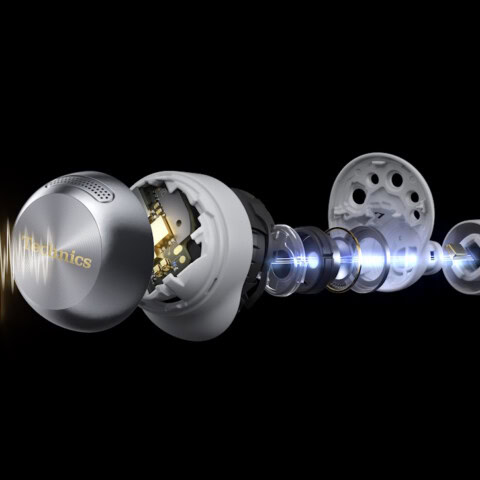Summary
Huawei’s Mate XS Smartphone
Looking for something to “wow” the crowd? The Mate X packs the latest technology and a hi-res foldable screen writes PAT PILCHER.
$4635
 It’s been a while since I’ve reviewed anything new from Huawei. I finally managed to get my sweaty paws on their latest foldable phone, the Mate XS. It takes what was already good with the original Mate X and improves upon it. Tweaks include an improved hinge, more durable construction, and a tonne of other good stuff. Read on!
It’s been a while since I’ve reviewed anything new from Huawei. I finally managed to get my sweaty paws on their latest foldable phone, the Mate XS. It takes what was already good with the original Mate X and improves upon it. Tweaks include an improved hinge, more durable construction, and a tonne of other good stuff. Read on!
Would you like to support our mission to bring intelligence, insight and great writing to entertainment journalism? Help to pay for the coffee that keeps our brains working and fingers typing just for you. Witchdoctor, entertainment for grownups. Your one-off (or monthly) $5 or $10 donation will support Witchdoctor.co.nz. and help us keep producing quality content. It’s really easy to donate, just click the ‘Become a supporter’ button below.
The Mate XS differs from most other foldable phones in that its screen faces outward rather than being folded inwards. Because of this, the Mate XS doesn’t need a secondary display for when it’s folded, although having a polymer screen on the outside potentially makes it more prone to dings and scratches.
The big advantage of having an outward-facing screen is that when folded, you still have a large 6.6-inch display, just like on a standard smartphone. Other foldable phones I’ve reviewed usually need to be unfolded if you want to do more than make or receive calls and text messages. When out and about, I usually used the Mate XS folded. Things get even better when the Mate XS is unfolded. Its display is glorious. In use, it feels more like a small tablet than a phone, making it ideal for Facebook, emails, web browsing and, of course, gaming. All told, the unfolded Mate XS AMOLED display is stunning.
 Unfolding is possible thanks to a button tucked away on its rear. Pressing it swings out the display, which can then be folded flat. It’ll also lock into place. The folded screen has a resolution of 2480 x 1148 at 90hz and is easily bright enough to be used outdoors. If you look long enough, you’ll see a hard to find (and almost non-existent) crease in the unfolded display. There are bezels around the screen, and they’re a tad thicker than you’d expect on most non-folding phones, but then again, there’s also no camera notch. When unfolded, its display is a gigantic 8 inches with a 2480 x 2200 resolution and is easily the best foldable display I’ve used to date.
Unfolding is possible thanks to a button tucked away on its rear. Pressing it swings out the display, which can then be folded flat. It’ll also lock into place. The folded screen has a resolution of 2480 x 1148 at 90hz and is easily bright enough to be used outdoors. If you look long enough, you’ll see a hard to find (and almost non-existent) crease in the unfolded display. There are bezels around the screen, and they’re a tad thicker than you’d expect on most non-folding phones, but then again, there’s also no camera notch. When unfolded, its display is a gigantic 8 inches with a 2480 x 2200 resolution and is easily the best foldable display I’ve used to date.
On the design front, The Mate XS feels solid. Initial worries that I’d break it when unfolding it proved unfounded. Its hinge has operated smoothly throughout the entire time I’ve spent with it. The Mate XS isn’t a light phone. It weighs 300 grams, but then I’ve seen heavier non-folding phones, so this isn’t a big deal.
The Mate XS screen is wafer-thin, at a mere 5.5mm. Most of its components are housed in a bump running along its left edge. The bump is home to the 5G radio/battery/camera and electronics. It also acts as a handy grip for using the Mate XS unfolded. I’d long been reluctant to unfold other phones when out and about as I was worried that I’d drop and break them. The grip on the Mate XS meant I could hold it securely when unfolded. This is a clever design touch that other foldable phone makers should learn from.
 When folded, the Mate XS could easily be mistaken for a bog-standard smartphone at around 11mm thick. On its right-hand side sits the volume buttons and power controls. Handily, the power button also doubles as a fingerprint sensor. It proved easy to reach, and the fingerprint sensor was fast and accurate. This meant I could grab the Mate XS, power and unlock it simultaneously.
When folded, the Mate XS could easily be mistaken for a bog-standard smartphone at around 11mm thick. On its right-hand side sits the volume buttons and power controls. Handily, the power button also doubles as a fingerprint sensor. It proved easy to reach, and the fingerprint sensor was fast and accurate. This meant I could grab the Mate XS, power and unlock it simultaneously.
On its bottom sits a USB Type-C connector but no 3.5mm audio jack. This means Bluetooth ear gear is a must unless you use the bundled USB Type-C headphones.
Under the Mate XS hood sits Huawei’s Kirin 990, a 7nm CPU with an integrated 5G radio. There is also a generous 512GB of storage and 8GB of RAM. In use, the Mate X ran like a cut cat. Demanding games or multi-tasking apps all managed to run super smoothly. Used with 2Degrees’ newly launched 5G network, I clocked data throughput of 534mbps using the Oookla speed test app.
The shooters on the Mate XS are pretty much the same as those that were such a huge hit on Huawei’s P30 range. They consist of a Leica branded 40 MP, f/1.8 main camera (like the P30, it uses an RYYB sensor for super impressive night shots). There’s an 8 MP, f/2.4 telephoto lens and a 16 MP, f/2.2, 17mm ultra-wide shooter too. Add in some pretty clever AI, and it’s almost impossible to take a bad photo. Another brilliant touch is that the main snapper is also the selfie camera. Because the screen folds around, you can preview selfies as you take them. As the main shooter is used for selfies, their quality is top-notch.
Using a combination of camera hardware and software trickery, the Mate XS also offers a 30x zoom for photos and a 10x zoom for videos.
Powering the show is a 4,500mAh battery. In use, it lasted an entire day and then some (I’d typically have between 30-40% charge left at night), and it can be fast-charged using the bundled 45W charger. Considering it is powering an 8-inch display and super zippy CPU, battery life is impressive. However, the one fly in the charging ointment is the lack of wireless charging. This is an understandable compromise as the screen wraps around its back, leaving nowhere for wireless charging electronics to live.
 The other gotcha is less of a big deal than I thought it’d be. That is the lack of Google mobile services. Huawei has deftly managed to navigate this with Petal Search. Type in an app name and Petal Search will trawl through a swathe of 3rd-party app stores such as APK Pure and others to find the app. Even better still, it’ll also notify you if any updates are available. I also installed Aurora Store, a Google Play store clone that doesn’t need Google Mobile Services.
The other gotcha is less of a big deal than I thought it’d be. That is the lack of Google mobile services. Huawei has deftly managed to navigate this with Petal Search. Type in an app name and Petal Search will trawl through a swathe of 3rd-party app stores such as APK Pure and others to find the app. Even better still, it’ll also notify you if any updates are available. I also installed Aurora Store, a Google Play store clone that doesn’t need Google Mobile Services.
While these two solutions worked fine for most apps, Gmail, Maps, Photos, Air NZ, and others still needed Google Mobile Services to run. Getting around this was easy. I Installed VMOS, a virtual machine that runs Android with Google Mobile Services. Compared to other hacks to get Google Mobile services, VMOS is bombproof. As It is an installable app, there’s no risk of bricking your phone. The premium version of VMOS can also run as a rooted install, giving you even more flexibility should you need it. After installing VMOS, Gmail, Maps and Photos worked fine. This was a good thing as I needed to use it to display my Vaccine pass in Google Pay.
I was also impressed by the way that the Mate XS handled multi-tasking. Unfolded, I could drag apps from the right-hand side of the screen. I could have two apps running side-by-side (each app took about the same amount of screen real-estate as you’d expect on a regular smartphone). I was also able to run a third app in a floating window.
The biggest gotcha, however, is one that is harder to navigate – the sticker price.
Living on the very bleeding edge of cutting-edge tech means that the Mate XS commands a steep price premium. It isn’t aimed at your typical consumer, and foldable phones cost a bomb. Considering that, the $4635 price I found via a parallel importer wasn’t a huge surprise.
It might cost a bomb, but it is unique. The Mate XS isn’t just a great foldable phone, but also a stunning flagship device. While the lack of Google mobile services might be a turn off for some, it isn’t a biggie like it used to be as there are lots of workarounds that work well. If you’re a Huawei fan and want a unique but usable foldable phone, the Mate XS is a fantastic choice – if you can afford it.
https://consumer.huawei.com/nz/phones/mate-x-s/














